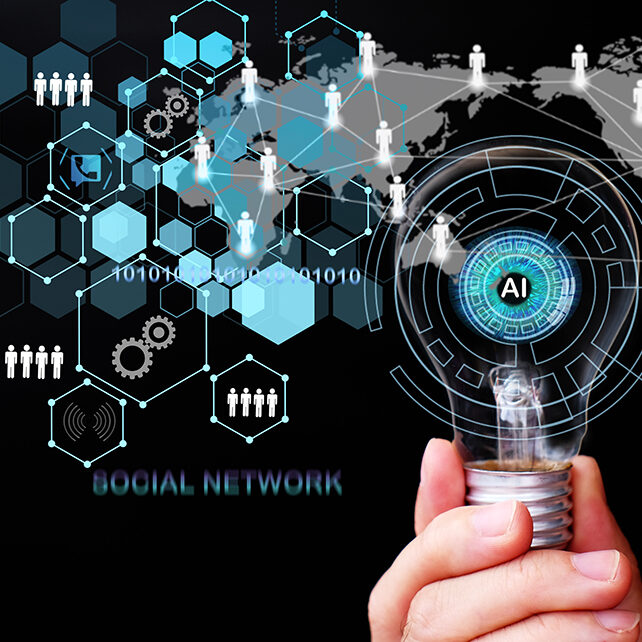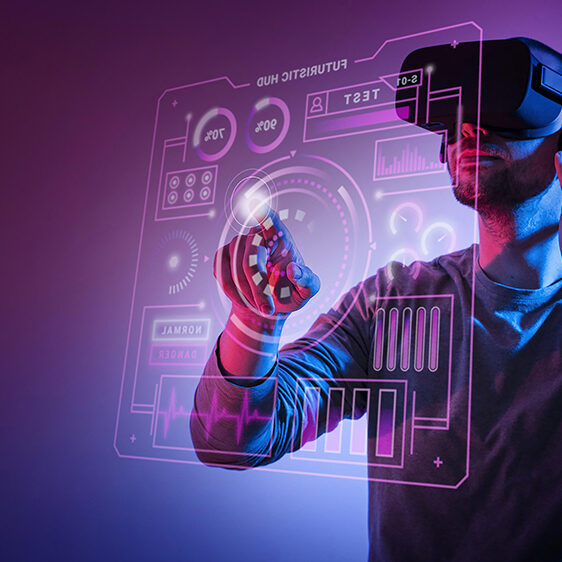Digitally Connected Consumers: Connected Economy
India has the 2nd largest number of internet users in the world. The internet’s penetration has reached outstanding numbers in the country. By 2023, the number of active Indian internet users is expected to grow up to almost 666 million in India and higher than 5.3 billion on a global level. This indicates an online shift for a larger share of people, making it sensible and opportunistic for retail brands to venture into the digital marketing space.
There is a rise in the consumption of data. An increased number of people have started subscribing to various platforms for video consumption as well as for other dependencies on the internet such as social media, public profiles, promotions, chatting, gaming, mega-verse networking, bit-coins exchange, online shopping etc. This is expected to rise even higher owing to the digital revolution that is going on.
Even through the pandemic, there has been an increase in the amount of money that has been channeled to marketing and advertising on digital channels. Today, even the biggest companies are restructuring their marketing budget to shift their focus to digital. According to statistics, the growth of the Indian e-commerce market is pushing to R. 7 trillion by 2023 due to the pandemic and multiple lockdowns. This strongly suggests that the growth of digital marketing is on an upward trend and has hugely & positively impacted businesses as well as the lives of people.


Technology Influenced Consumer Aspirations & Behavior
The more people embrace technology, the greater their expectation that every company they work for or, buy products and services from, will also embrace technology. People love technology.
They change their behaviors’ due to the technology. They expect companies to be different because of technology. And, there’s always new technology. Yes it sounds like a circular argument! But the cycle goes something like this: People invent technology. People adapt to the technology. It changes their life. More new technology is invented. People adapt to this technology. It changes their life. It is a circular argument for the simple reason that technology evolves.
As a result, people – customers and employees – constantly change their expectations. In the last decade, people have embraced and demanded new technology faster than ever before. It’s this environment that is forcing organizations to rapidly transform.
Evolving Consumer Expectations as Identified in sociological and statistical studies:
- 57% of consumers believe that all their appeals and issues should be resolved online and only 30% of companies can do it
- 64% of customers want to receive real-time support using their communication channel of choice
- The ability to solve problems online, by phone or other means of communication increases customer commitment by more than 36%
- 78% of all consumers make a purchase based on the level of customer service
A micro share of hardly 10 % of companies understand that their current business model will only remain economically viable if their industry continues to digitalize in the same direction and speed. Businesses that welcome changes and are ready for them, businesses that can adapt to more flexible work models have more potential than ever to succeed.
It’s not just one-time transformation, but to constantly transform business and be open for changes is a regular work in progress which can only be successfully implemented by a constantly evolving digital transformation strategy set in motion by futuristic mindsets.
The last two decades were marked by a sweeping wave of digitization that has transformed almost every sector, some more rapidly than others but eventually touching every domain.

Smartphone usage, increasing internet access, and advanced digital tools and technologies have collectively shaped the way we shop, work, travel, eat, socialize, and even live. It’s safe to say that the private sector, being at the forefront of development, has driven change in the right direction. Although the public sector has been slow in adopting technology, the ball has been set in motion and it’s only a matter of time until full-scale digital transformation in government is seen.

DIGITAL TRANSFORMATION STRATEGIES
In 21st century world has turned into a marketplace and catering to diverse customers and consumers is the main challenge of all goods and services providers. People quickly get used to something good and easily set new standards in the market. If you buy tickets it should be on the phone, paying via bank transfer or the phone itself. You want support 24/7, and to track delivery, and to watch purchase history, and analyze costs spend monthly etc.
Digital transformation enables existing business by integrating advanced technologies into already existing business models, changing the way the business operates and delivers the product or service with optimum efficiency & performance in lesser time.
Planning the Digital Transformation Journey
Digital transformation has become crucial to businesses operating in the new normal. On one hand, fundamental changes to the business are certain and smart changes are necessary; on the other hand, changes brought in by digital evolution of economy & transformation are risky, and modernizing IT operations is complex and depends upon the approach of the business to elevate the future of the organization.
Digital Transformation is not just disruption of technology but it has more to do with helping solve business problems.
Faster deployment of the digital transformation strategy is affecting the levels of consumer behavior and expectations, economic realities and societal shifts in different verticals.
Digital Transformation adds value to the client through technology, creating an easy shopping interface, customer experience or controlling the whole supply chain.


It specifies the direction an organization will take to create new competitive advantages with technology, as well as the tactics it will use to achieve these changes.
The six Core Elements of Digital transformation of 21st century businesses are:
1) Experiences
2) People
3) Change
4) Innovation
5) Leadership
6) Culture
The three 3 main components of embarking on your digital transformation are namely to Evolve & Transform three main areas of the businesses:
- a) Customer experience
- b) Operational processes
- C) Business models
And each of these three pillars has three different elements that are changing.
Digital strategy focuses on using technology to improve business performance, whether that means creating new products or reimagining current processes.
First & foremost we deduce, define & devise the digital strategy.
Digital transformation strategy is discussed through the lens of digital marketing and user experience (Ux) in the Content & Creative marketing Universe and Consumer Retail business.
The idea that customers now utilize technology to research, find and select products and services that match their needs makes brands seek & share Digital Transformation actively & flaunt it before Digital Native Consumers to create an impulse & experience for repeated buying. Digital transformation can be explored as an opportunity to reshape a business from the business management perspective by aligning the operating model with new business models by making the product and services of a business become more digitally infused thereby reducing the operating cost and increasing profitability.
A Complete & Successful Transformation is brought about by keeping sight of values & significance of various cornerstones of Digital Technology viz.
# Action-able intelligence (What data should become to deliver)
# Opportunity (What new avenues are created)
# Speed/agility (What the cloud offers)
# Hyper-connectivity (How track each moment of humans life, home & activities)
# More & More data collection…
By internet guzzling consumer technologies driven data streams being spouted by people & personal devices(what the Internet of Things (IOT), mobility and so on create by access to consumer lifestyles tracked by data consumed every second)
Ultimately Digital transformation works at the intersection of:
People
Purpose
Innovation
Optimization
Information
Processes
Value and
Business models
Which all come into play and optimize performances & efficiencies to magnify growth!
DIGITAL TRANSFORMATION STRATEGY: BUILDING BRIDGES WITH THE FUTURE
Digital transformation is not a onetime event or act, it’s partially an ongoing journey and partially a goal, but most of all it requires a clear roadmap and strategy with ample room for adjustment in an adaptive way along the path to Digital transformation.
It is more about a continuous business transformation strategy in the scope of technological and societal change. It’s the development of a capacity to act, react and ideally pro-act as societal changes and technological evolutions continue to take place, accelerate and evolve to take head on new occasions, disruptions, changes, challenges and chances, brought upon us by new trends & technologies. The Internet of Things is just one example of this continuous change which is at a very nascent stage with far more changes, chances, challenges on the way. Digital transformation is just the key to adapt & adopt to Evolutionary changes for each & every business as part of natural growth cycle & process.
DIGITAL MARKETING
Technology has changed the marketing landscape forever!
Technology is changing, and enhancing the marketing landscape.
Technology is the facilitator. Blending of technology with people’s lifestyle generates copious amount of personal data. This Data has become a source of strategic advantage. It opens up a window of rare insights which unravel vista of never imagined before challenges which once explored, open up fresh set of opportunities.
The digital parts of marketing have made marketing easier with far outreach & outcomes. It is less expensive and has a greater impact than traditional approaches.
Digital tools and social media have helped big and small sellers to market & reach out to far-flung consumers in remote corners of the outstretched market busting at seams of network availability & consumer connectivity.
Disruption caused by the pandemic has pushed us into a world of volatility, uncertainty, complexity and ambiguity (VUCA).
Product launches and purchases are no longer the same. All industries are feeling the pressure of Evolution & transformation in one way or another. Consequently, the marketing and advertising industry is orienting itself more towards digital marketing to keep pace with change, challenges & competition.
Disruption due to pandemic has resulted in a significant change in the size, availability, and profile of the digital audience, bringing in people who were previously only accessible offline. This has also led to marketing undergoing a big pivot.
Ever since the pandemic, there’s a huge shift in the buying trend, with the advent on online shopping, new brands have appeared on the Digital Markets horizon to cater to the shifting preference.
The marketing and advertising industry is orienting itself more towards digital marketing and social media platforms. Data has become a source of strategic advantage. The information emerging from the data has led to precise marketing, through which new consumers may be brought into the fold. Business models are built around data. It could probably lead to a stage of personalized make-for-me products. Besides niche offerings, social media, crowd sourcing and online marketing research could determine the organization’s outlook & vision.
The viral word-of-mouth influencer channel has led to a wave of new online shoppers through tech tools. They help in monitoring consumer behavior, real-time feedback and return on investment (ROI).
Low cost of failure and quick go-to-market products compel the incumbent businesses and entrepreneurs to experiment with newer models at a faster pace.
All this leads to a situation when campaign cycles have become shorter and products are more agile.
In a digital set-up, the tools empower marketers to reach out directly to consumers. Digital transformation must be from the top. Businesses require a clear vision of the business model and then build a brand strategy for ROI and the right unit of economics.
Digital marketing is the use of tools, & technologies at their very best backed by Consumer behavior & Science of Marketing to enable Development, Engagement & Delivery.
Digital Marketing is a real-time data analysis process where the brand or business can see the results of their campaigns, post on social media. It enables marketer with these insights, statistics carrying all about customers, with the help of google search console, google analytics. The marketer gets to know & analyze everything about their brands & its audience. What age group do these belong to, from where they got engaged to you, where they belong, what are their preferences. It gives you a fair idea about your performance, & you can brain storm & specify where to improve.
While digital marketing is at a very early stage, it is presently one of the most powerful ways to market your retail brand and shall remain so in the future.
It is interesting to understand & implement the dynamics of this channel that is under perpetual motion or change every day to better market & monetize its complete scope & potential.
The industry is constantly changing and evolving with new trends such as Voice Searches, Virtual Reality, Artificial Intelligence, NFTs & Meta-verse etc., helping the brands make the most out of it and it will continue to be a game-changer in the near future.
DIGITAL MARKETING IS ALL ABOUT CONTENT: TO WOO CONSUMERS
There has been a surge in online content consumption platforms as a result of this shift in attention toward all things digital. The online platforms are growing to stay up with new competitors and user demands.
Desire drives Digital Life more than Need.
With the introduction of lockdown, the size, availability, and profile of the digital audience has significantly changed, bringing in people who were previously only accessible offline. Not only that, but it has also altered their attitudes, expectations, content consumption, and how they expect to be treated as consumers.
To be successful in the field of digital marketing your content should be liked by your audience. Your content should be able to influence minds of the customers & readers. Those who can influence their audience can make millions. Thus content plays a key role in the field of digital marketing. Content includes keywords, ad paragraphs, taglines, hashtags, basically all about your services & products.
Data assimilation could lead many companies into direct-to-consumer (D2C) selling. This helps drive sales, and companies can create a better customer experience and stronger customer relationships. D2C can be seen as a means for companies to create sustainable businesses.
In the future, digital commercials will be the dominant way of marketing for organizations of all kinds, with traditional advertisements, while still relevant, but dwindling in relevance.


ADOPT DIGITAL LIFE: ADAPT TO DIGITAL ECO-SYSTEM
An economic downturn has compelled companies to streamline their budgets. It may not be possible to solve the VUCA environment, but one has to live & adapt to it by decoding it. So, the consumer Retail industry has to rethink its strategies to sustain itself in the trying situation when the rate of online consumption is growing at a fast pace.
Most organizations, big or little, old or new, financially secure or stressed, functioning locally, nationally, or even globally, have adopted digital marketing as a way of life. This includes the start-ups as well.
While content marketing, complete with SEO strategies, blogging, personalized emails, pay-per-click, mobile marketing, influencer marketing, and other overlapping features and functionalities, have all been popular tools in a marketer’s digital toolkit, social media marketing, in particular, has proven to be a great leveler for startups and small businesses. The sheer ‘viral’ nature of the medium may take a small business from obscurity to unfathomable fame in no time, allowing them to compete with established huge brands.
Almost all major social media networks, from Instagram to Facebook to YouTube to Snap Chat to WhatsApp to Twitter, allow video marketing in some form or another. This is due to a variety of factors. If a picture is worth a thousand words, it’s no exaggeration to argue that a moving picture or video is worth a million!
In the future, digital commercials will be the dominant way of marketing for organizations of all kinds, with traditional advertisements, while still relevant, dwindling in relevance.
A decent online presence has become more than a need as we move into a technology-dependent world. People trust social media more than they trust the individual. Furthermore, digital marketing is crucial in the commercial world.
Adapting to the New Normal of Future
With online marketing, it is imperative for a business to revamp its communication strategy.
The earlier communication technique used may no longer be appropriate & effective when people’s priorities and schedules have undergone so much drastic change. Evolve to grow!
